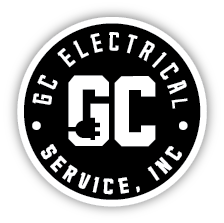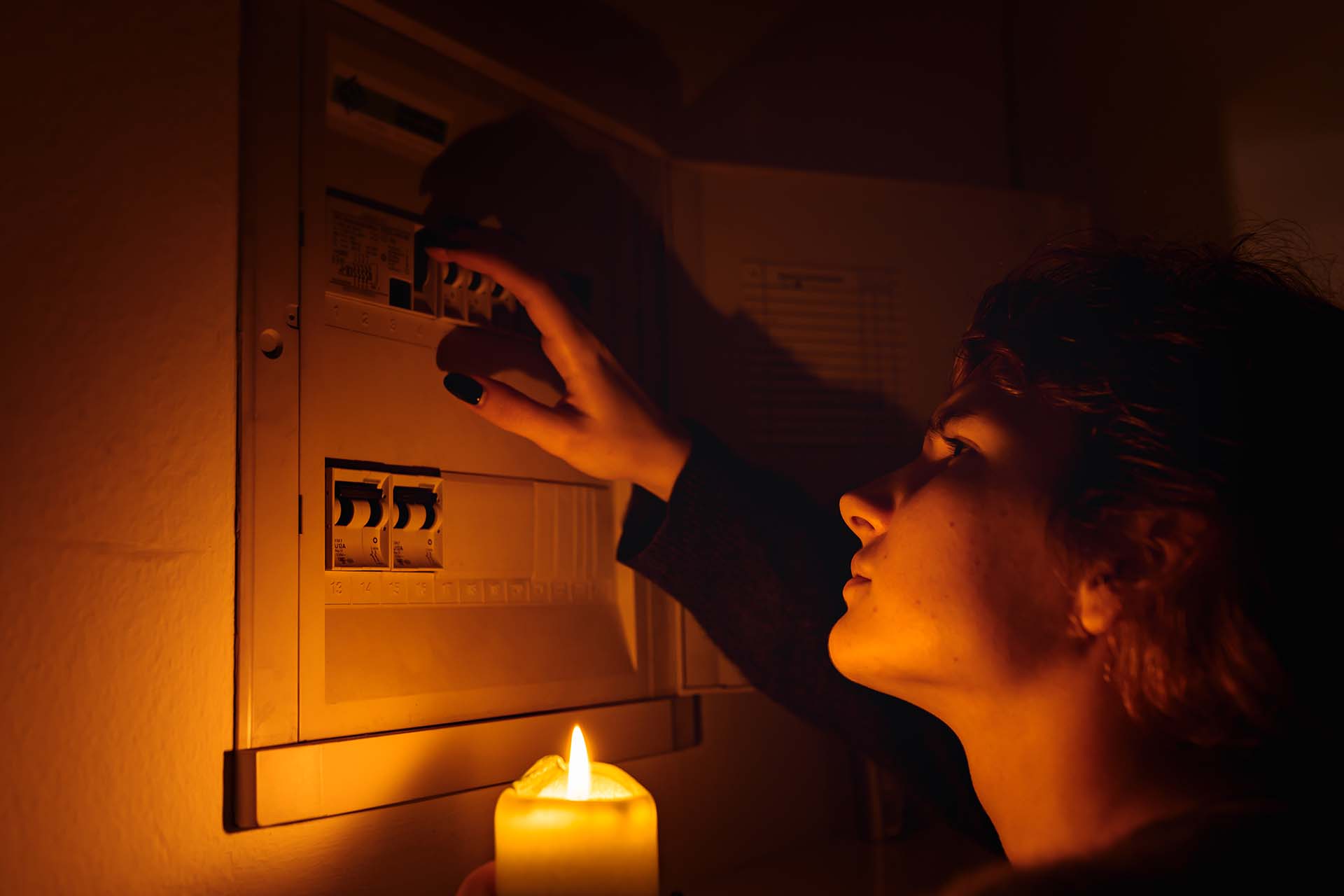Preparing for a power outage is essential for ensuring the safety and comfort of yourself and your loved ones during unexpected disruptions to your electrical supply. Power outages can happen for several reasons, frequently without prior notice, including severe weather conditions and equipment malfunctions. Having a well-thought-out plan and necessary supplies can make all the difference when navigating through such situations. Let's explore essential steps and tips to help you effectively prepare for a power outage, ensuring you're ready to handle any challenges.
Five Steps to Take When Power Goes Out
Experiencing a power outage can be a disruptive and sometimes stressful event, but knowing what to do when it happens can help you stay calm and manage the situation effectively. Here are five essential steps to take when the power goes out:
-
Check for the Scope of the Outage
Assess the situation and determine whether the power outage is limited to your home or affecting a wider area. Check if your neighbors are also experiencing a loss of power. Go outside or contact them directly if their lights are on. If the disruption appears to be widespread, contact your utility company to report the problem. -
Preserve Food and Minimize Opening the Refrigerator
Preserving perishable food items to prevent spoiling is crucial during a power outage. Keep the refrigerator and freezer doors closed as much as possible to maintain the cold temperature inside. A refrigerator can typically keep food cold for about four hours if left unopened, while a full freezer can maintain its temperature for about 48 hours (24 hours if half-full) if the door remains closed. -
Use Alternative Light Sources
When the power goes out, it's essential to have alternative light sources available to illuminate your home. Keep flashlights, lanterns, and battery-powered candles in easily accessible locations. Avoid using candles with an open flame, as they pose a fire hazard, especially if left unattended. If you have a generator, follow safety guidelines to power lights or appliances. -
Be Updated With Local News
Stay informed about the outage by listening to a battery-powered radio for updates from local authorities or your utility company. Many utility companies also provide outage maps and updates on their websites or through mobile apps. Knowing when power is expected to be restored can help you plan accordingly and stay prepared. -
Stay Safe and Comfortable
During a power outage, prioritize your safety and comfort. When power is restored, unplug delicate electronic equipment to prevent power surges. There is a chance of carbon monoxide poisoning; exercise caution when using portable generators and never run them inside or in enclosed areas. Dress warmly in cold weather and stay hydrated in hot weather to remain comfortable until power is restored.
By following these steps, you can effectively navigate through a power outage and minimize its impact on your daily routine and well-being. Remember to stay calm and informed and prioritize safety until power is restored.

Developing a Family Emergency Plan
Making a family emergency plan is a preventative step that gives everyone a sense of security and guarantees they know what to do and where to go in an emergency. Here's a step-by-step guide to developing a comprehensive family emergency plan:
Identify Potential Hazards
Begin by mentally visualizing the possible dangers that could impact your region, such as the ground trembling beneath your feet during an earthquake, the sky darkening and becoming violent during a hurricane, or the streets filling with water during a flood. Consider the likelihood of each scenario and how it might impact your family.
Establish Communication Protocols
Designate an out-of-area emergency contact that every family member can reach in case local communication networks are down or overloaded. If a severe storm hits your neighborhood and the power goes out, having a designated contact who lives in a different area could be a lifesaver. Ensure everyone knows how to contact this person and establish a communication plan for checking in during emergencies. Determine alternative communication methods such as text messages, social media, or walkie-talkies.
Create a Family Emergency Kit
Assemble a family emergency kit containing essential supplies to sustain your family for at least 72 hours. Include non-perishable food, water, medications, first aid supplies, flashlights, batteries, blankets, clothing, cash, important documents (identification, insurance policies), and any special items for infants, seniors, or pets. Store the kit in a portable container that is easily accessible.
Develop Evacuation Routes and Meeting Points
If you must evacuate immediately, determine the best routes out of your house and neighborhood. Acquaint yourself with several backup plans in various directions. Establish designated meeting points within and outside your neighborhood where family members can reunite if separated during an emergency.
Assign Responsibilities and Roles
Assign specific responsibilities and roles to each family member based on their capabilities and skills. Designate tasks such as gathering the emergency kit, shutting off utilities, caring for pets, assisting elderly or disabled family members, and evacuating the home. Practice these roles through regular drills and exercises to ensure everyone is prepared to act when needed.
Educate and Practice
Educate your family members about the different types of emergencies that could occur and how to respond to each situation. Conduct regular emergency preparedness drills and practice your family emergency plan at least twice a year. Rest assured, the plan is adaptable and can be reviewed and updated as necessary, considering any changes in family dynamics, living arrangements, or community resources.
Following these steps and developing a family emergency plan can enhance your family's resilience and readiness to face unexpected emergencies with confidence and composure. Remember, preparation is key to staying safe and minimizing the impact of emergencies on your family's well-being.

Securing Your Home Before a Power Outage
Securing your home before a power outage is crucial for ensuring your family's safety and minimizing potential damage to your property. Here are some essential steps to take to prepare your home:
Secure Loose Items
Inspect your outdoor space and secure or bring inside any loose items that could become projectiles in high winds, such as patio furniture, outdoor decorations, or gardening tools. To keep these things from blowing away during a storm, store them in a shed or garage or weigh them down with large objects.
Trim Trees and Shrubs
Trim back any overhanging branches or limbs near your home that could potentially fall onto power lines or your roof during a storm. Pruning your trees and shrubs can also lessen the chance of falling debris damaging your property.
Reinforce Doors and Windows
Check the integrity of your doors and windows and reinforce them if necessary to prevent them from being damaged or blown open by strong winds. Consider installing storm shutters, plywood covers, or impact-resistant glass to protect windows from flying debris and reduce the risk of breakage.
Secure Backup Power Sources
If you have a backup power generator or portable generator, ensure it is properly maintained and in good working condition. Regularly test your generator to ensure it will start when you need it and that you have enough fuel on hand. When using a generator, follow the safety instructions to avoid electrical hazards and carbon monoxide poisoning.
Backup Important Data
Back up important data on your computers, mobile devices, and other electronic devices to prevent data loss during a power outage. Use external hard drives, cloud storage services, or backup software to store copies of your files and documents off-site securely.
Stock Up on Supplies
Stock up on essential supplies to sustain your household during a power outage, including non-perishable food, bottled water, medications, batteries, flashlights, candles, matches, and first aid supplies. Keep a portable emergency kit in an easily accessible location, and make sure everyone in your household knows where it is.
Create a Family Emergency Plan
Develop a family emergency plan that outlines what to do and where to go in a power outage or other emergency. Decide on family meeting locations, evacuation routes, and communication procedures. Practice your emergency plan regularly to ensure everyone understands their roles and responsibilities.
By taking these proactive measures to secure your home before a power outage, you can help protect your family and property and minimize the disruption caused by unexpected emergencies. Stay prepared, stay safe, and stay informed.
Ensuring Safety and Comfort During Power Outage
Preparing for a power outage is essential for ensuring the safety and comfort of your family during unexpected disruptions to your electrical supply. A power outage can be lessened in your home by following the steps outlined in this guide, which include securing loose items, pruning trees and shrubs, strengthening doors and windows, securing backup power sources, backing up essential data, stockpiling supplies, and developing a family emergency plan. Always remember to be aware of potential dangers, exercise caution during periods of extreme weather, and put your safety first. When you plan and are prepared, you can handle a power outage with resilience and confidence.
Explore the GC Electrical Service, Inc. blog today for expert insights and guidance on electrical safety and preparedness.


